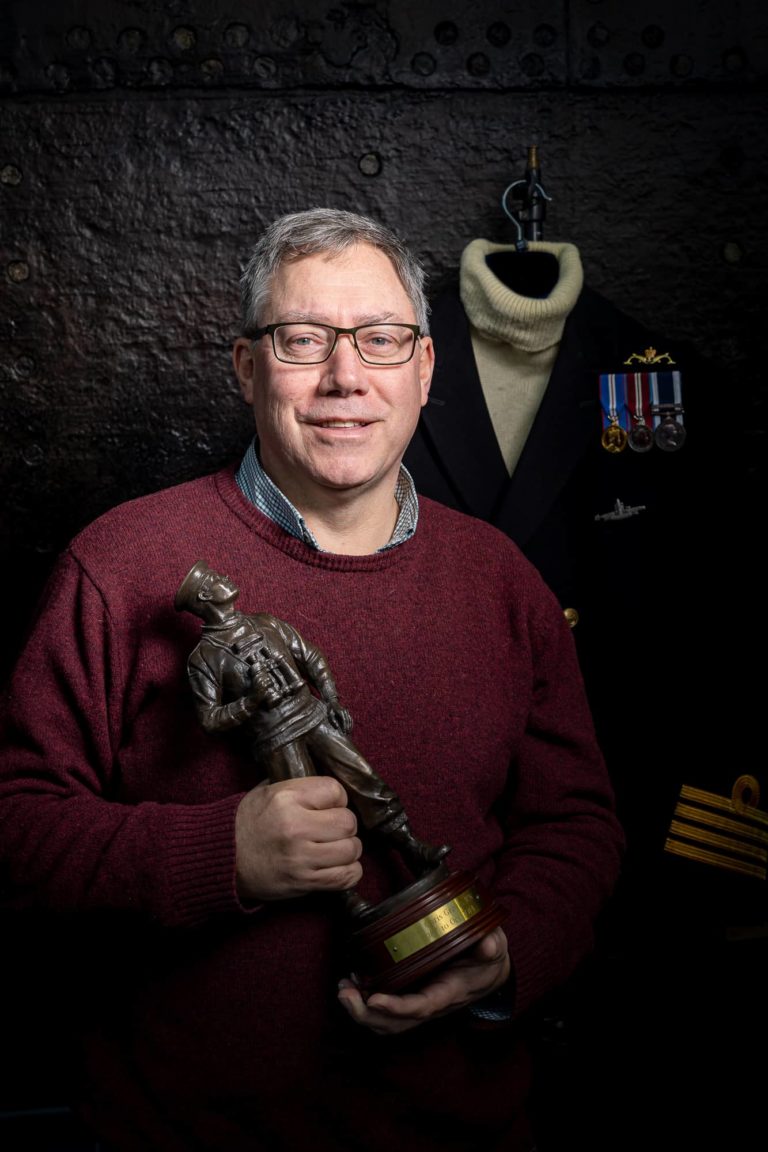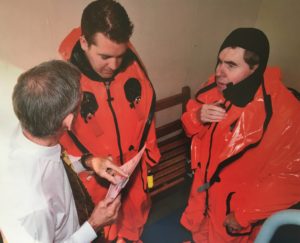Chris Groves – What is the Perisher course?
So I guess that any Submariner Warfare Officer’s view, selection for Submarine Command, so selection for the Submarine Command Course or colloquially known as the ‘Perisher Course’ is the pinnacle of your early warfare career. It’s what you aiming for because it’s the route to the second half of your career in submarines if you like.
As a Warfare Officer, if you don’t get onto Perisher and you don’t get through Perisher then you don’t get to those exciting roles which is Second in Command and Command of a submarine. So, that’s kind of everything that you’ve been groomed for through your training and preparation, whether that be inshore or sea roles.
And so the Course is split really into a Shore Phase and a Sea Phase so the Shore Phase really start off with what we would call ‘eyes only safety’, so that’s making sure that you can remain safe at periscope depth using only the periscope really fundamentally to keep yourself safe, in increasingly complex scenarios where you start off with maybe only one Warship and then you add in a Warship and a Fishing Vessel and a Merchant Vessel and then you add in two Warships and you work up to a sort of a scenario where you’ve got five Warships plus a couple of Fishing Vessels and the Warships are moving pretty fast and some of them are coming directly towards you and providing you with real significant issues of safety and you have to make a decision.
The idea being really that you remain safe but you reduce the chances of you being counter detected so in other words seen effectively either by a sensor so by a radar or visually and so you want to keep the mast, the periscope if you like, under the water for the most time you possibly can, in that scenario and you’re doing that by using the tool of the periscope but using your mental agility and maths to be able to work out how far away that the various vessels are, what courses they’re doing and you’re trying to work out what speed they’re doing and how close they’re going to come to you.
Simon: This is all through the periscope.
All through the periscope. You’re assisted a bit by various positions within the Control Room who are looking at it from a Navigation Plot perspective and an Operations Plot and making sure that these are recorded, so you have a little bit of time when the mast is down to be able to consult with the rest of the team and brief the team on what’s going on and what your aims are and what you’re objectives are and you’re constantly worried about, you know, am I safe?
Is there a chance of me being counter-detected and am I achieving the aim? And so, the initial bit, you could almost I guess call it a Driving Test. Can you keep the submarine safe using the periscope, at periscope depth in really tactically quite demanding scenarios? Can you prioritise? Can you make the right decisions? Have you got good judgement?
That’s really what you’re looking at, it’s a Driving Test. And so, once you’ve done that, and you can prove that you can do that, then you can start to look at how you can operate the submarine slightly more tactically.
How you can use the rules that you used to keep the submarine safe, to your advantage to then be able to be covert and achieve the aim in a slightly more realistic and tactical environment.







